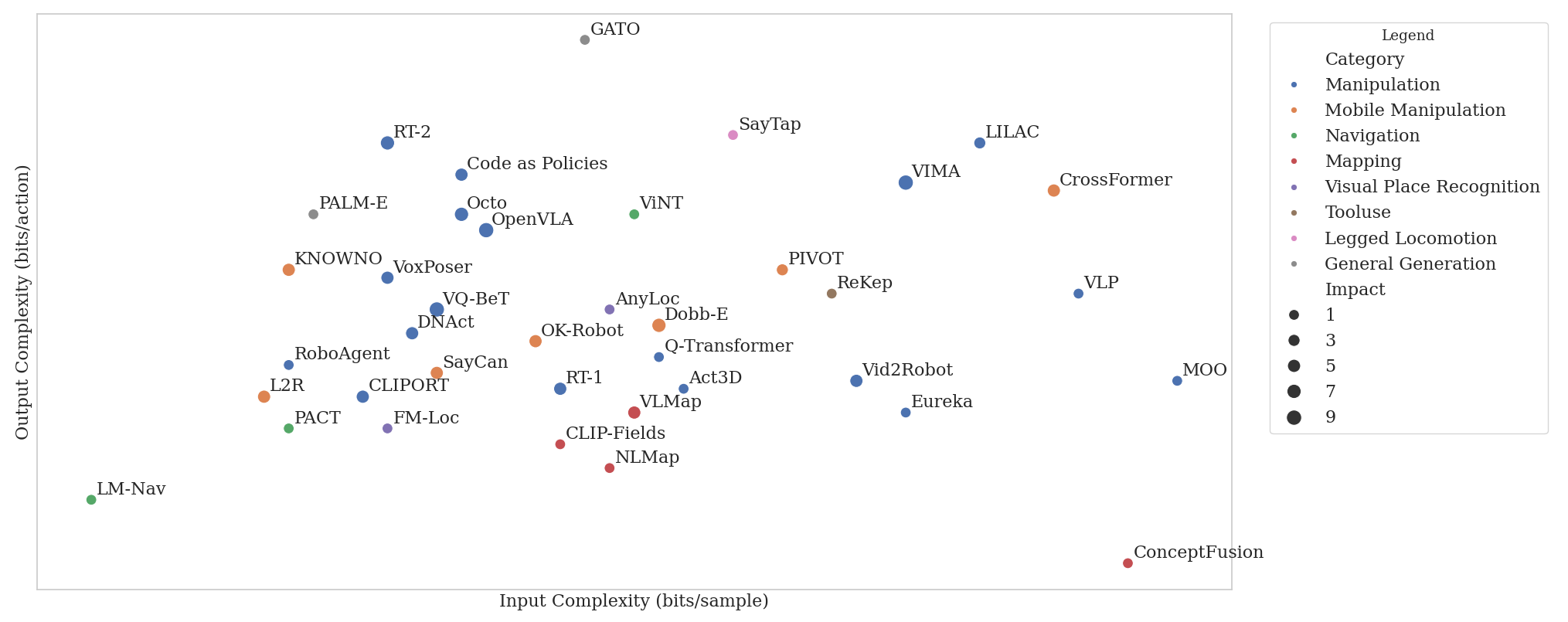Toward General-Purpose Robots via Foundation Models: A Survey and Meta-Analysis

Abstract
Challenges on General-purpose Robots

Taxonomy of the challenges in robotics that could be resolved by foundation models. We list five major challenges in the second level and some, but not all, of the keywords for each of these challenges.
Current Research
Taxonomy of General-purpose Robotics via Foundation Models

Conceptual Framework of Foundation Models in Robotics: The figure illustrates a structured taxonomy of foundational models, categorized into two primary segments: the application of existing foundation models (vision and language models) to robotics, and the development of robotic-specific foundation models. This includes distinctions between vision and language models used as perception tools, in planning, and in action, as well as the differentiation between single-purpose and general-purpose robot foundation models.
Brief Summary of Input and Output Complexity

Here we plot some representative works of foundation models used in robotics, and robotic foundation models. The horizontal axis represents the complexity of input data; the vertical axis represents the complexity of output action space. The complexity of the input data is brought by the modality of the data, e.g. image data is more complex than the text data. The complexity of output action space is mainly determined by the output dimension of the foundation model in the robotic tasks.
BibTeX
@article{hu2023robofm,
author = {Yafei Hu and Quanting Xie and Vidhi Jain and Jonathan Francis and Jay Patrikar and
Nikhil Keetha and Seungchan Kim and Yaqi Xie and Tianyi Zhang and Hao-Shu Fang and Shibo Zhao
and Shayegan Omidshafiei and Dong-Ki Kim and Ali-akbar Agha-mohammadi and Katia Sycara and
Matthew Johnson-Roberson and Dhruv Batra and Xiaolong Wang and Sebastian Scherer and Chen Wang
and Zsolt Kira and Fei Xia and Yonatan Bisk},
title = {Toward General-Purpose Robots via Foundation Models: A Survey and Meta-Analysis},
booktitle = {arXiv preprint: arXiv:2312.08782 },
year = {2023},
}